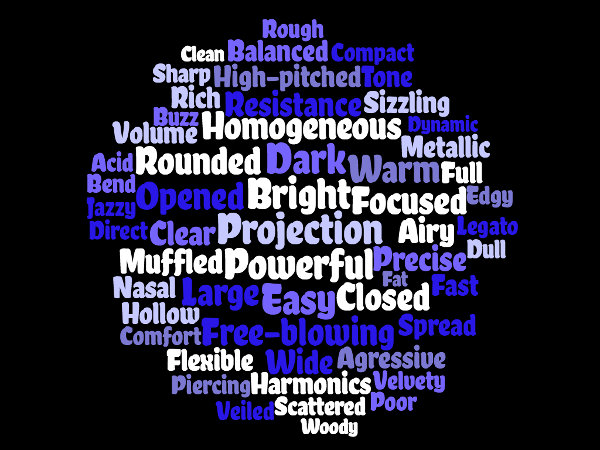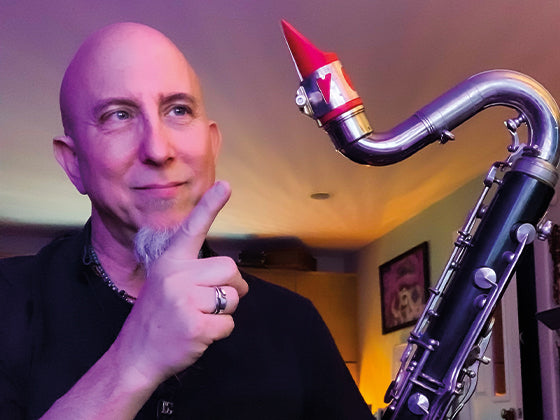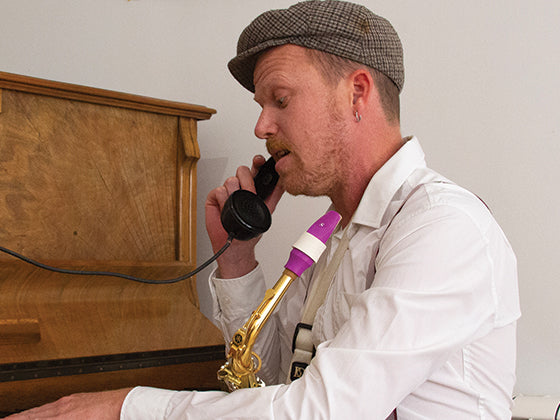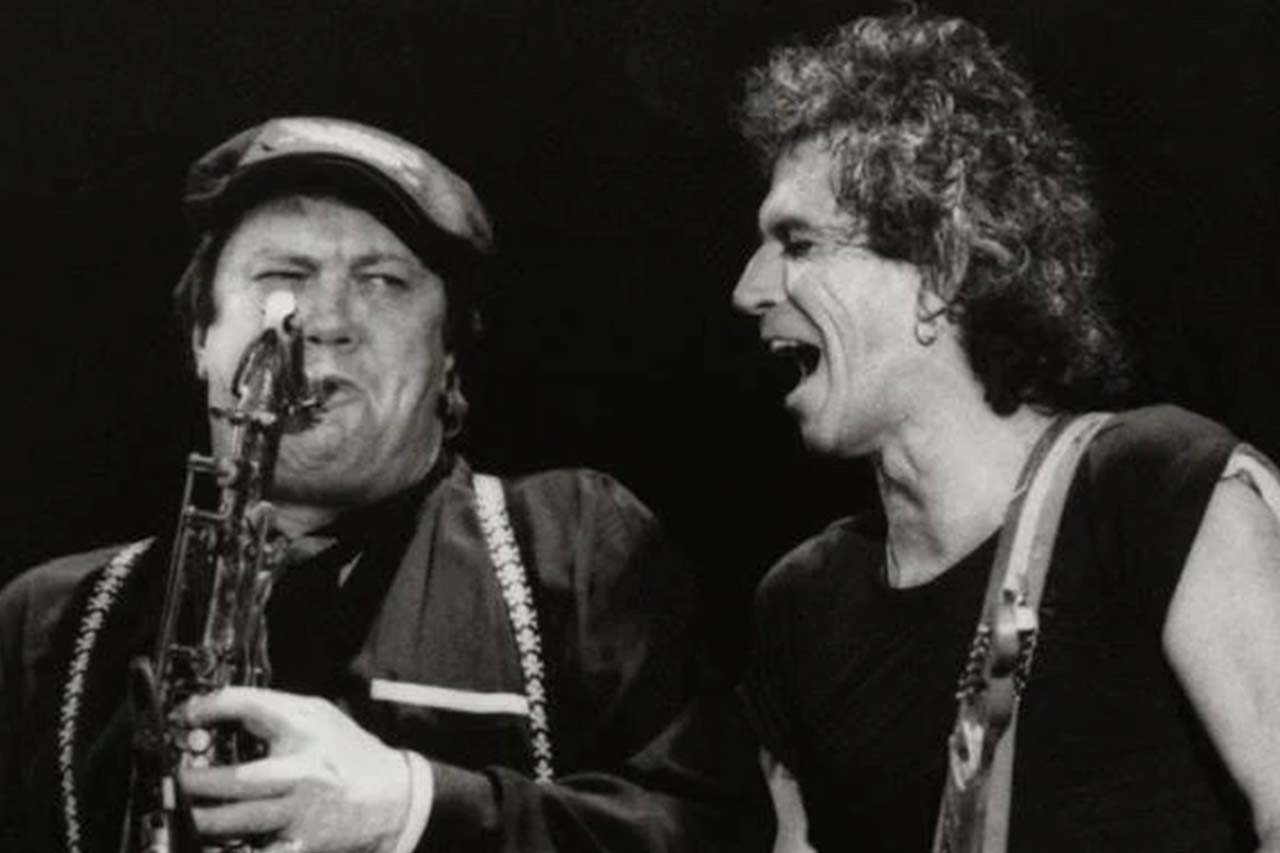Are you looking for a bright tone or a dark tone? When you try mouthpieces in a music store or when you create yours with Syos, it's one of the first questions to answer. But what does it mean exactly ? Maxime, our psychoacoustics expert, is going to give you some explanations.
What makes it bright?
What is the real difference between two different players' tones? And how can we describe it in words? This was our biggest question when we created Syos. We did a lot of research on the internet, we created surveys on Facebook and on saxophone websites. But we also, of course, talked to a lot of sax players, and did hundreds of sax mouthpiece testing sessions, writing down all the words used by players.
One characteristic always came up first: the brightness of the sound.

Brightness is the first criteria that allows you to say if two sounds with the same height, length and volume sound alike or not.
How to define brightness?
This point here is tricky: how to define a sensation? If I asked you "How would you define brightness?" I bet it would be hard for you to answer with a simple and precise sentence. But no worries! During my PhD at IRCAM in Paris, I worked on this topic for more than 3 years.

Describing an aural sensation is not an easy task. It is like, for example, defining the color red: the simplest answer would be to give a definition with an example, giving examples of objects that are red, contrasted with objects that are not. This type of definition depends on our senses and on our perception of colors. We can call this perceptual definition. However, there might be among you readers, a scientist who will object that we can also give a physical definition, for example giving the wavelength range associated with the color red.
For brightness, it is exactly the same: sax players would be able to tell that David Sanborn has a very bright sound, meanwhile acousticians would talk about sound spectrum and high frequencies.
So, which definition should we choose?
Both types of "brightness definition" that are equally valid, but they do not mean the same thing. On one side, the perceptual definition is "more" true to reality as it comes directly from the person hearing the sound. On the other side, it is a very subjective definition: one person could say a sound is bright, while another (hearing the very same sound) could say that it is not bright at all.
This is the case for ambiguous tones, like John Coltrane's. A study I did with more than a hundred sax players shows that 34% of them say it's "Dark" while 66% say it's "Bright" (read the complete study : The mystery of John Coltrane's sound)
| Perceptual definition | Physical definition |
| TangibleCloser from reality Subjective Vary according to individuals | AbstractMathematical concept Impartial Measurable, steady |
The physical definition is unbiased: a brightness measurement can be attributed to any sound, or rather sound signal. However, this value does not have a meaning on its own: to be relevant, it has to be representative of what people perceive.
Brightness perceptual definition
In order to demonstrate the difference in individual perception, we carried out a small experiment: we selected recordings of different famous sax players, and for each of them we chose a 5 to 10 second extract. We, then, created a quiz where participants were asked to rate the extracts on a scale of 1 to 10, in terms of the power, brightness and width. We were mostly interested in brightness. The participants did not know the names of the sax players, they simply had anonymous recordings to judge. You can find the complete quiz and do the experiment by clicking on this link describing the saxophone tone. More than a hundred sax players answered the quiz, let's take a look at the results:

On this graph, the recordings used for the quiz are arranged from the lowest average brightness (the winner being Paul Desmond) to the highest (our champion Michael Brecker). The black line represents the average grading disparity: the bigger it is, the more controversy there is about the tone. Generally, the average disparity is relatively even even if Kenny Garrett and Sonny Rollins seem to cause slighlty more contraversy.
We, then, created a brightness scale from the sonor extracts, like an oenologist would do with wines, or a nose with perfumes. Some academic experiments focus on brightness, for example the Stephen Mc Adams' Timbre Space (which is mentionned in this article: how to describe a sound).
Physical definition of brightness
Several acoustics and psychoacoustics studies (if you don't know what those words mean, you should definitely read this article : Warm, bright, focused, dark? Psychoacoustics brings some light!) have been done about the physical description of brightness, which has been associated with "the quantity of high frequencies we hear in a tone".


There is even a psychoacoustic indicator called acuity which represents a sound's brightness. One way to calculate this is by determining the spectral centroid. This is to say finding the ratio between the weight of low frequencies and high frequencies in a sound. This measurement is mostly used for industrial purposes, there is no evidence yet that this could be representative of the brightness in the saxophone's tone.
Can the saxophone mouthpiece change the brightness?
The mouthpiece connects the musician to the rest of the instrument, and it is essential for creating the sound. Although it's worth keeping in mind that the musician is the one that shapes the tone with his own choices, technique, embouchure (by the way, for sax players, here are 3 exercices to practice your own sound: long tones, overtones and 5ths/8ves), but the mouthpiece's geometry will enhance some characteristics more than others. Therefore, with some mouthpieces it will be easier to get bright sounds. The baffle and the chamber are two parametres that are particularly important with regards to the brightness of a mouthpiece.
For your reading list:
The baffle: a true game changer The saxophone mouthpiece chamber













